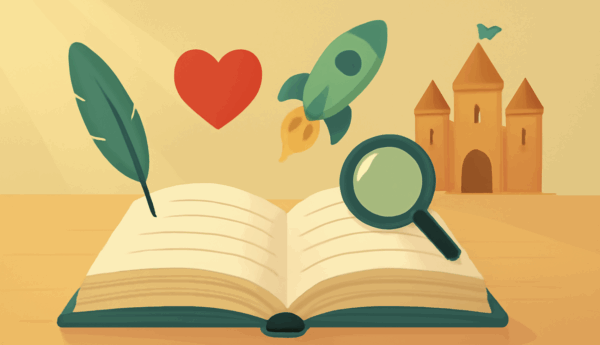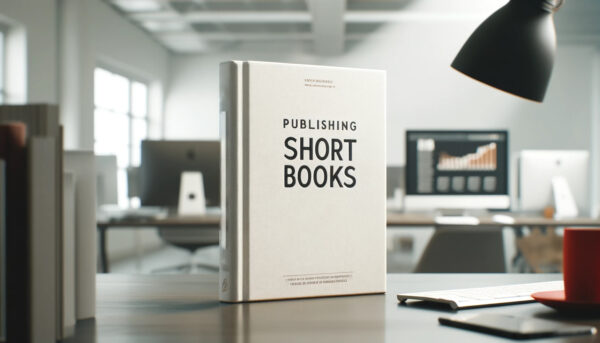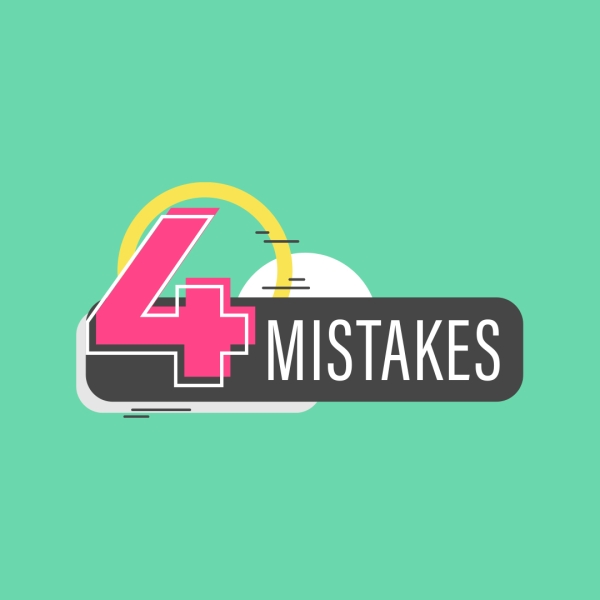Did you know that the publishing industry contributes to the destruction of over 30 million trees annually just to meet the demand for paper? This staggering figure not only impacts global deforestation but also contributes to the release of massive amounts of greenhouse gases into the atmosphere. For every book printed, there’s an environmental cost—one that many authors and readers may not be fully aware of. This article serves as a beginner’s guide to understanding these impacts and how to mitigate them.
So why should you, as an author, care about eco-friendly book production? The answer lies in the growing demand for environmentally conscious choices in all sectors. Readers are increasingly aware of the environmental impact of their consumption habits, and publishing a book that aligns with these values can set you apart.
Whether you’re self-publishing or going the traditional route, understanding the environmental impact of your decisions can make a difference. Self-publishing online platforms, such as Spines, have already introduced print-on-demand technology that allows books to be printed only when ordered, reducing the wasteful overproduction associated with traditional publishing houses. On the other hand, traditional publishers are slowly catching up by implementing sustainable practices like using recycled paper and eco-friendly inks.
Your Publishing Journey Awaits – Start NowBy the end of this article, you’ll have a deeper understanding of the environmental challenges posed by the traditional publishing process, along with practical solutions you can implement to ensure your book aligns with eco-friendly practices. In a world where sustainability is increasingly important, every small step counts—and your book could be part of the solution.
The Publishing Process: Traditional vs. Self-Publishing
When it comes to the publishing industry, there are two primary routes authors can take: traditional publishing and self-publishing. Each comes with its own set of environmental impacts, with traditional publishing often leading to higher carbon footprints due to the scale and practices involved. Self-publishing, on the other hand, offers authors more control and, when done right, can be a significantly more eco-friendly option.
A publishing company can assist authors with the self-publishing process by providing essential services like editing and marketing. Let’s dive into the environmental costs of both and compare their eco-friendliness and creative control.
The Traditional Publishing Process: Environmental Costs
Traditional publishing houses typically follow a lengthy and resource-intensive process. Once a manuscript is accepted, the publisher handles the editing, design, printing, and distribution of the book.
While this may seem convenient, the large-scale operations of traditional publishing come with significant environmental costs:
- Paper Waste: Traditional publishers often print large quantities of books in anticipation of demand, but not all of these copies get sold. Unsold books are frequently returned by retailers and can end up as waste, contributing to deforestation and excessive paper consumption. While some publishers recycle unsold books, many still land in landfills.
- Shipping Emissions: Traditional publishing relies heavily on large-scale distribution networks, which include shipping books to warehouses, retailers, and customers worldwide. The transportation required for this process, whether by air, sea, or land, generates a substantial amount of greenhouse gas emissions. The farther the books need to travel, the higher the carbon footprint.
- Overproduction and Inventory Waste: Publishers often overestimate demand for paperback books, leading to surplus stock. These unsold books either sit in storage, contributing to energy consumption or are destroyed, which further adds to environmental waste.
These practices not only waste resources but also limit creative control for authors. Authors have little say in how many copies of their book are printed, what materials are used, or how the book is distributed.
The Self-Publishing Process: A More Eco-Friendly Approach
Self-publishing has become a popular and environmentally friendly alternative. Here’s how self-publishing can minimize environmental impacts:
- Print-On-Demand (POD) Technology: One of the biggest environmental advantages of self-publishing is the use of POD technology. Unlike traditional publishers who print large batches of books upfront, self-publishing platforms only print books when an order is placed. This eliminates overproduction and drastically reduces paper waste, ensuring that each book has a buyer.
- Digital Formats: Self-publishing allows authors to distribute their books in eco-friendly digital formats such as ebooks and audiobooks. These formats entirely eliminate the need for physical materials, printing, and shipping, reducing both paper consumption and carbon emissions.
- Fewer Transportation Emissions: With print-on-demand services, books are often printed locally, reducing the need for long-distance transportation.
- Control Over Materials: Self-publishing authors have the power to choose environmentally friendly options for their books, such as recycled paper and eco-friendly inks.
The rise and significance of self-published books within the literary landscape empower authors to control their work without traditional publishing delays, allowing diverse voices and stories to reach readers more efficiently.
Traditional vs. Self-Publishing: A Comparison of Eco-Friendliness and Creative Control
When comparing the two publishing models, it’s clear that self-publishing offers distinct environmental benefits over traditional publishing:
- Eco-Friendliness: Traditional publishing is often wasteful due to overproduction, long-distance shipping, and reliance on non-recycled paper. Self-publishing, especially with POD, addresses many of these issues by eliminating excess inventory and reducing transportation emissions. Digital publishing takes this a step further by offering a paper-free option.
- Creative Control: Self-publishing also allows authors more freedom in terms of their own book and production. From choosing sustainable materials to deciding on the number of printed copies, authors can make eco-friendly decisions that align with their values. In contrast, traditional publishing gives authors very little say over these aspects of the process.
- Production Efficiency: Self-publishing is a more efficient model when it comes to minimizing environmental impact. Traditional publishing, while improving in some areas, still faces challenges related to large-scale production and distribution.
While traditional publishing has long been the dominant route for many authors, self-publishing offers a more sustainable and efficient way to bring books into the world.
Your Publishing Journey Awaits – Start NowSustainable Practices in the Publishing Industry
As environmental concerns continue to rise, the publishing industry is slowly shifting toward more sustainable practices to reduce its carbon footprint. From using eco-friendly materials to adopting greener production methods, both traditional publishers and self-publishers are beginning to incorporate environmental considerations into their processes. Authors can also choose various publishing services, such as editing and distribution, to enhance sustainability. However, the speed and extent of these efforts vary significantly between traditional publishers and self-publishers.
Overview of Sustainable Practices in the Industry
In response to growing consumer demand for environmentally conscious products, the publishing industry has begun implementing several green initiatives:
- Recycled Paper: One of the most significant steps in reducing the environmental impact of book production is the use of recycled paper. Many publishers are moving away from paper made from virgin wood pulp, opting instead for paper that is either partially or fully recycled.
- Eco-Friendly Inks: Conventional printing processes often use petroleum-based inks that release volatile organic compounds (VOCs) into the atmosphere, contributing to air pollution. In contrast, eco-friendly inks made from vegetable or soy bases are gaining popularity. These inks not only reduce the emission of harmful chemicals but also degrade more easily.
- Carbon-Neutral Printing: Some publishers have adopted carbon-neutral printing practices, where they offset the emissions produced during printing by investing in projects that reduce or capture carbon, such as reforestation efforts.
- Energy-Efficient Production: Many printing facilities have also adopted energy-efficient technologies, such as solar panels or wind energy, to power their operations. Reducing energy consumption during the printing process helps to lower the overall carbon footprint of book production.
How Traditional Publishers and Self-Publishers Differ in Green Practices
While both traditional and self-publishers have begun adopting these sustainable practices, the way they implement these initiatives can differ significantly:
Traditional Publishers: Major publishing houses have the resources and scale to introduce widespread green initiatives, but the transition to eco-friendly practices can be slow. The reliance on large print runs, extensive supply chains, and global distribution networks makes it challenging for traditional publishers to fully embrace sustainable practices.
Self-Publishers: Self-publishing platforms are inherently more sustainable in many ways. By printing only the number of books ordered, they eliminate the need for large inventories and significantly reduce paper waste.
Overall: Self-publishing offers authors more creative control over eco-friendly choices, like using recycled paper, sustainable inks, or digital formats. While not all platforms prioritize sustainability, authors can choose those that do. Traditional publishers are slower to adopt green practices, making self-publishing a better option for environmentally conscious authors.
Preparing Your Manuscript for Eco-Friendly Production
As an author, you have the power to make a positive impact on the environment through your book production choices. Preparing your manuscript for eco-friendly production is a crucial step in reducing your carbon footprint and promoting sustainability in the publishing industry.
Tips for Writing an Eco-Friendly Book
When writing your book, consider the following eco-friendly tips:
- Use Digital Tools: Embrace digital tools and software to reduce paper waste. Platforms like Google Docs, Scrivener, or Microsoft Word allow you to draft, revise, and collaborate without printing physical copies.
- Choose Ink-Efficient Fonts: Opt for fonts that are easy to read and require less ink to print, such as Garamond or Georgia. These serif fonts are not only aesthetically pleasing but also more sustainable.
- Optimize Formatting: Use headings and subheadings to break up your text, reducing the need for excessive formatting. This approach not only enhances readability but also minimizes the number of pages in your book.
- Reduce Page Count: Consider using a smaller font size and efficient layout to reduce the number of pages. Fewer pages mean less paper and ink, contributing to a more eco-friendly book.
Choosing Eco-Friendly Fonts and Formatting
When it comes to formatting your book, making eco-friendly choices can significantly reduce your environmental impact:
- Digital-Optimized Fonts: Select fonts that are optimized for digital reading, such as Open Sans or Lato. These fonts are designed to be legible on screens, making them ideal for ebooks and reducing the need for physical copies.
- Efficient Layouts: Choose a layout that minimizes white space and reduces the number of pages. A well-organized layout not only looks professional but also conserves resources.
- Consistent Formatting: Use consistent formatting throughout your manuscript to avoid unnecessary reformatting. This practice streamlines the editing process and reduces the need for multiple drafts.
Best Practices for Editing and Proofreading
Editing and proofreading are crucial steps in the publishing process. To make these steps more eco-friendly, consider the following:
- Digital Editing Tools: Utilize digital tools and software to reduce paper waste. Programs like Grammarly or ProWritingAid can help you edit and proofread your manuscript without printing physical copies.
- Eco-Friendly Freelancers: Work with freelance editors or proofreaders who use eco-friendly practices, such as working remotely or using public transportation.
- AI Proofreading Software: Consider using AI-powered proofreading software. These tools can efficiently catch errors and improve your manuscript while reducing the environmental impact.
Self-Publishing Platforms and Green Solutions
As authors become more eco-conscious, self-publishing platforms are rising to the occasion by offering sustainable options that reduce waste and minimize the environmental impact of book production. Let’s explore how these solutions are transforming the self-publishing world.
Print-On-Demand Technology: Minimizing Waste, Eliminating Upfront Costs, and Reducing Emissions
One of the most significant innovations in sustainable self-publishing is print-on-demand (POD) technology. Traditionally, publishers print large quantities of books in advance, which often leads to overproduction, unsold inventory, and substantial waste. POD eliminates this problem by printing each book only when an order is placed.
In addition to minimizing waste, POD eliminates upfront printing costs for authors. In the traditional publishing model, authors or publishers must cover the expenses of producing thousands of books upfront, with no guarantee that all will sell. POD, on the other hand, allows authors to avoid these costs entirely, printing only what is needed.
Furthermore, POD technology contributes to lower carbon emissions. Because POD services typically print books at local facilities closer to where the order is placed, it reduces the need for long-distance transportation. Instead of shipping large batches of books from centralized printing facilities to various parts of the world, POD enables shorter shipping distances, thus cutting down on the emissions generated during distribution.
Your Publishing Journey Awaits – Start NowSustainability and Digital Formats: The Benefits of Ebooks and Audiobooks
For authors looking to take their sustainability efforts to the next level, digital formats offer the ultimate green solution. Ebooks and audiobooks eliminate the need for physical materials, such as paper, ink, and binding, completely sidestepping the environmental concerns associated with traditional print publishing.
Audiobooks also present a sustainable alternative to print. While they require storage space on servers and energy to be distributed and accessed, their overall environmental impact is far lower than that of physical books.
In addition to their environmental benefits, digital formats offer convenience and accessibility for both authors and readers. Authors can reach a global audience instantly without worrying about printing or shipping costs, and readers can enjoy books on their devices without contributing to deforestation or pollution.
Eco-Friendly Book Cover Design and Formatting
When it comes to eco-friendly book production, the cover design and interior formatting play crucial roles in minimizing environmental impact. This section will explore how to design an eco-friendly book cover, optimize the interior layout for sustainability, and balance cost considerations with eco-conscious choices.
Eco-Friendly Cover Design: Sustainable Materials and Reducing Carbon Footprint
The book cover is often the first thing readers notice, and as an author, you want it to make a lasting impression. But beyond aesthetics, the materials used in creating the cover can have a significant environmental impact. Fortunately, there are ways to reduce the carbon footprint of your cover design without sacrificing quality.
- Recycled Paper and Cardstock: One of the most effective ways to make your book cover eco-friendly is by using recycled paper or cardstock. Many printing services now offer paper certified by the Forest Stewardship Council (FSC), ensuring that the materials come from responsibly managed forests. Recycled paper reduces the demand for virgin wood pulp and minimizes deforestation, making it a sustainable choice for your cover.
- Vegetable-Based Inks: Traditional inks often contain harmful chemicals derived from petroleum, which release volatile organic compounds (VOCs) into the atmosphere. By opting for vegetable- or soy-based inks, authors can significantly reduce the environmental impact of the printing process. These inks are not only biodegradable but also produce vibrant colors, ensuring that your cover remains eye-catching while being eco-friendly.
- Minimalist Design Choices: Another way to reduce the environmental impact of your book cover is to embrace minimalism. Simplifying the design can reduce the amount of ink needed, and opting for fewer embellishments, such as foil stamping or plastic lamination, can further decrease the resources used in production. A clean, elegant design can be just as visually appealing while leaving a smaller ecological footprint.
Interior Layout and Formatting: Optimizing for Sustainability
The interior layout of your book also presents opportunities to incorporate sustainable practices. By leveraging digital book formatting and tools and making eco-conscious choices in your layout, you can reduce waste and improve the overall sustainability of your book production.
Eco-Friendly Digital Formatting Tools: Many self-publishing platforms provide digital formatting tools that help authors create professional-quality interiors with minimal environmental impact. These tools enable authors to format their books without using physical resources, ensuring that the entire layout process remains digital.
Optimizing Page Count and Layout: A carefully designed interior layout can also help minimize the environmental impact of printing. Reducing unnecessary white space, optimizing font size, and choosing efficient formatting can lower the page count, which means fewer resources are needed to print each copy.
Cost Considerations: Green Solutions that Save Money
While it’s important to prioritize sustainability, many authors worry that eco-friendly options will come with higher costs. Fortunately, several green practices can actually reduce expenses while benefiting the environment.
Eco-Friendly Materials at Affordable Prices: Many professional services now offer eco-friendly materials, such as recycled paper and vegetable-based inks, at competitive prices. Additionally, choosing a minimalist cover design can save on production costs while still delivering a visually striking book.
Digital Formats: For authors looking to avoid printing costs entirely, digital formats such as ebooks and audiobooks offer the most eco-friendly and cost-effective solution.
By using sustainable materials for cover design, optimizing the interior layout, and choosing cost-effective green solutions, authors can significantly reduce the environmental impact of their book production.
Choosing Eco-Friendly Printing Options
Once your manuscript is prepared, it’s time to consider your printing options. As an author, you have the power to choose eco-friendly printing options that reduce your carbon footprint and promote sustainability in the publishing industry.
Print on Demand (POD) vs Offset Printing: Which is More Eco-Friendly?
Print-on-demand (POD) and offset printing are two popular printing options for authors. But which one is more eco-friendly?
- Print on Demand (POD): POD is a more eco-friendly option because it only prints books as they are ordered, reducing waste and minimizing the need for storage. This method ensures that each book has a buyer, preventing unsold copies from ending up in landfills.
- Offset Printing: Offset printing requires a large print run, which can result in excess books that may not sell. However, it can be more cost effective for large print runs, making it a more sustainable option for authors who plan to sell a significant number of books.
Ultimately, the choice between POD and offset printing depends on your specific needs and goals as an author. Consider the following factors when making your decision:
- Print Run Size: If you plan to print a large number of books, offset printing may be more cost-effective. However, for smaller print runs, POD is likely the more eco-friendly option.
- Budget: POD can be more expensive per unit than offset printing, especially for large print runs. However, the reduced waste and minimized need for storage can offset these costs.
- Environmental Impact: If reducing your carbon footprint is a priority, POD is generally the more sustainable choice. It eliminates overproduction and reduces the environmental impact associated with unsold inventory.
By carefully considering your printing options and choosing the most eco-friendly approach, you can significantly reduce the environmental impact of your book production. Whether you opt for POD or offset printing, making informed decisions will help you contribute to a more sustainable publishing industry.
Navigating the Self-Publishing Journey with Sustainability in Mind
Self-publishing offers authors the freedom to control every aspect of their book’s creation, including the environmental impact. Many self-published authors choose this path due to its numerous benefits, including creative control and potential financial gains. In this section, we’ll walk through the self-publishing process with a focus on sustainability, discuss how to choose the right platform and examine the life cycle of an eco-friendly self-published book from start to finish.
Your Publishing Journey Awaits – Start NowStep-by-Step Guide to Eco-Friendly Self-Publishing
1. Manuscript Preparation
- Go Digital: From the very beginning, using digital tools for writing and editing your manuscript helps reduce paper waste. Software like Google Docs, Scrivener, or Microsoft Word allows you to draft, revise, and collaborate without printing anything on paper.
- Efficient Formatting: Before moving to publication, optimize your manuscript’s layout to minimize page count. This means using consistent formatting, reducing unnecessary white space, and choosing an appropriate font size.
2. Choosing an Eco-Friendly Cover Design
- As discussed earlier, opt for eco-friendly cover materials like recycled paper and vegetable-based inks. Keep the design simple and avoid excess embellishments such as glossy laminations or foiling that require extra resources and energy to produce.
3. Selecting an Eco-Friendly Self-Publishing Platform
- When choosing a self-publishing platform, look for one that aligns with your sustainability goals. Print-on-demand (POD) eliminates the need for large print runs and cuts down on unsold inventory. Self-publishing companies offer various services to help authors navigate the self-publishing process, including technology support and editing.
4. Sustainable Print Options
- If you choose to print physical books, opt for services that allow you to select eco-friendly options such as recycled paper and soy-based inks.
5. Ebook and Audiobook Formats
- To further reduce your environmental footprint, consider offering digital formats. These formats are also cost-effective, allowing you to reach a wider audience without incurring the cost of printing and shipping.
6. Eco-Friendly Book Marketing
- Promote your book using digital marketing strategies such as social media, email campaigns, and online book launches. You can also use virtual book tours and digital advertising to reach readers worldwide without the environmental impact of physical events and travel.
7. Green Distribution
- Finally, think about how your book is distributed. Opt for print-on-demand services that print closer to the buyer’s location, reducing the distance the book has to travel and lowering carbon emissions from shipping.
Life Cycle of a Self-Published Book: Reducing Environmental Impact from Start to Finish
The life cycle of a self-published book extends beyond its creation. To truly minimize its environmental impact, consider the entire journey from production to distribution and marketing.
- Production: By using POD services and eco-friendly materials, you ensure that your book’s production has a minimal environmental impact. Print only what’s needed, and offer digital formats to reduce resource consumption.
- Distribution: Choose platforms that print books near the point of purchase to reduce shipping distances. Offering ebooks and audiobooks can eliminate physical distribution entirely, further reducing your book’s carbon footprint.
- Marketing: Focus on digital marketing strategies such as social media, email newsletters, and virtual events to reach your audience without relying on printed materials or in-person tours. These tactics are not only eco-friendly but also cost-effective and scalable.
- End of Life: Even after your book is purchased, consider its environmental footprint. Encourage readers to recycle or pass along print copies when they’re done, or better yet, offer content in a digital format to reduce waste entirely.
By making smart choices at each stage—manuscript preparation, platform selection, production, and marketing—you can ensure that your book reaches your target readers, with minimal environmental impact.
Marketing and Distribution: Eco-Friendly Strategies
As a self-published author, it’s essential to consider the environmental impact of your book launch, marketing, and distribution strategies. In this section, we’ll explore eco-friendly techniques for promoting your book and reaching your target audience.
Eco-Friendly Marketing Techniques for Self-Published Authors
- Digital Marketing: Focus on online marketing strategies such as email marketing, social media, and content marketing. By leveraging platforms like Facebook, Instagram, and Twitter, you can reach a broad audience without the environmental cost of printed flyers or posters.
- Influencer Partnerships: Collaborate with eco-conscious influencers or book bloggers who align with your values. Influencers can review your book, host giveaways, or feature you in their content, providing exposure without the need for physical promotional materials.
- Virtual Book Tours: Organize virtual book tours, which eliminate the need for physical travel and reduce carbon emissions. Virtual tours can include live readings, Q&A sessions, and interviews conducted via video conferencing platforms, allowing you to connect with readers worldwide from the comfort of your home.
- E-book Promotions: Offer discounts or promotions for e-book versions of your book, encouraging readers to opt for digital copies. E-books are an eco-friendly alternative to physical books, as they require no paper, ink, or shipping.
- Sustainable Swag: Create eco-friendly swag, such as reusable tote bags or bamboo bookmarks, to promote your book and reduce waste. These items not only serve as promotional tools but also align with your commitment to sustainability.
Post-Publication Efforts: Maintaining Sustainability
After publishing your book, it’s essential to continue promoting sustainability in your post-publication efforts.
Sustainable Practices for Book Promotion
- Recycle and Repurpose: Repurpose old promotional materials, such as turning old bookmarks into new ones or using recycled paper for marketing materials. This practice not only reduces waste but also gives a second life to materials that might otherwise be discarded.
- Digital Updates: Update your website, social media, and email newsletters regularly to reduce the need for physical promotional materials. By keeping your digital presence active, you can engage with your audience without relying on printed materials.
- Community Engagement: Engage with your community through online events, webinars, or workshops. Virtual events allow you to connect with readers and fellow authors while minimizing your carbon footprint.
- Eco-Friendly Giveaways: Offer eco-friendly giveaways, such as reusable water bottles or bamboo pens, to promote your book and encourage sustainable practices. These items can serve as both promotional tools and practical, eco-conscious gifts for your audience.
- Carbon Offset: Consider offsetting your carbon emissions from book-related activities, such as travel or shipping, by investing in renewable energy projects or reforestation programs. Carbon offset programs can help neutralize the environmental impact of your promotional efforts, contributing to a greener future.
By incorporating these eco-friendly strategies into your marketing and distribution efforts, you’ll not only reduce your environmental impact but also appeal to the growing number of eco-conscious readers and authors in the self-publishing world.
Conclusion: Taking the First Step Toward Sustainable Publishing
Sustainable publishing is no longer a niche concern—it’s an essential consideration for authors who want to share their stories with the world. Throughout this guide, we’ve explored various eco-friendly choices authors can make, whether they choose traditional or self-publishing. From using digital tools in manuscript preparation to opting for print-on-demand (POD) technology, choosing recycled materials, and embracing digital formats like ebooks and audiobooks, there are countless ways to reduce the environmental footprint of your book.
As a beginner author, you have the power to shape not only your story but the way it impacts the planet. Sustainable publishing can also resonate with modern readers who are increasingly drawn to eco-conscious products.
Taking that first step toward sustainable publishing may feel daunting, but every small choice counts. By integrating sustainable practices into your publishing goals, you can help reduce the environmental impact of the book industry while making a lasting impression on future generations. Remember, the future of publishing lies not only in the stories we tell but in the way we bring those stories to life.
Your Publishing Journey Awaits – Start Now







